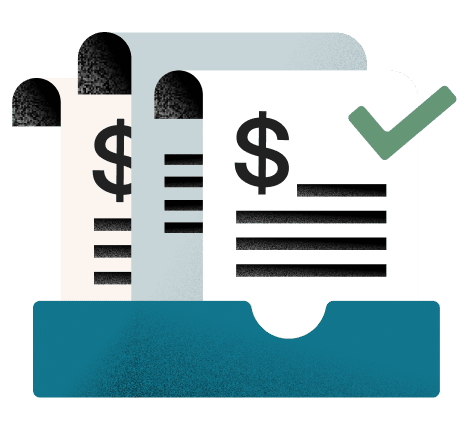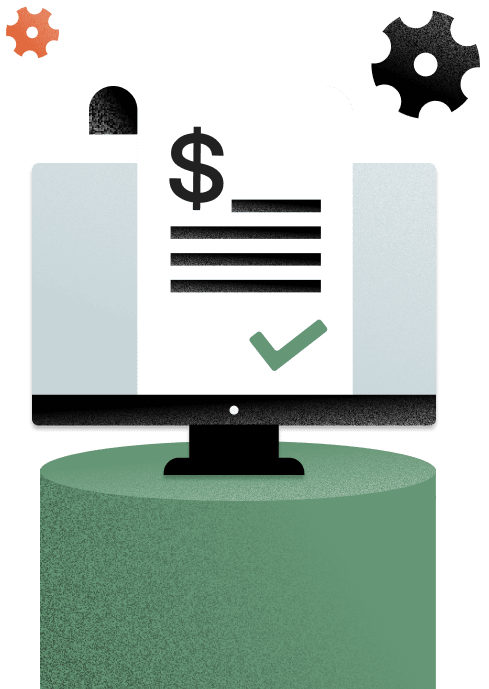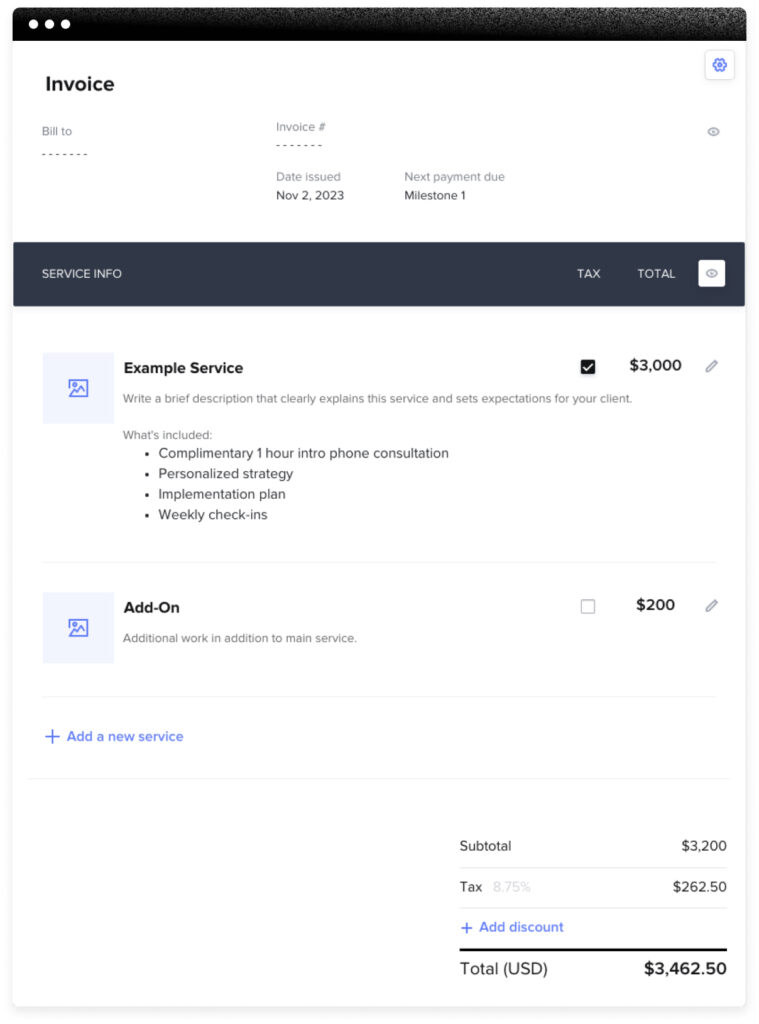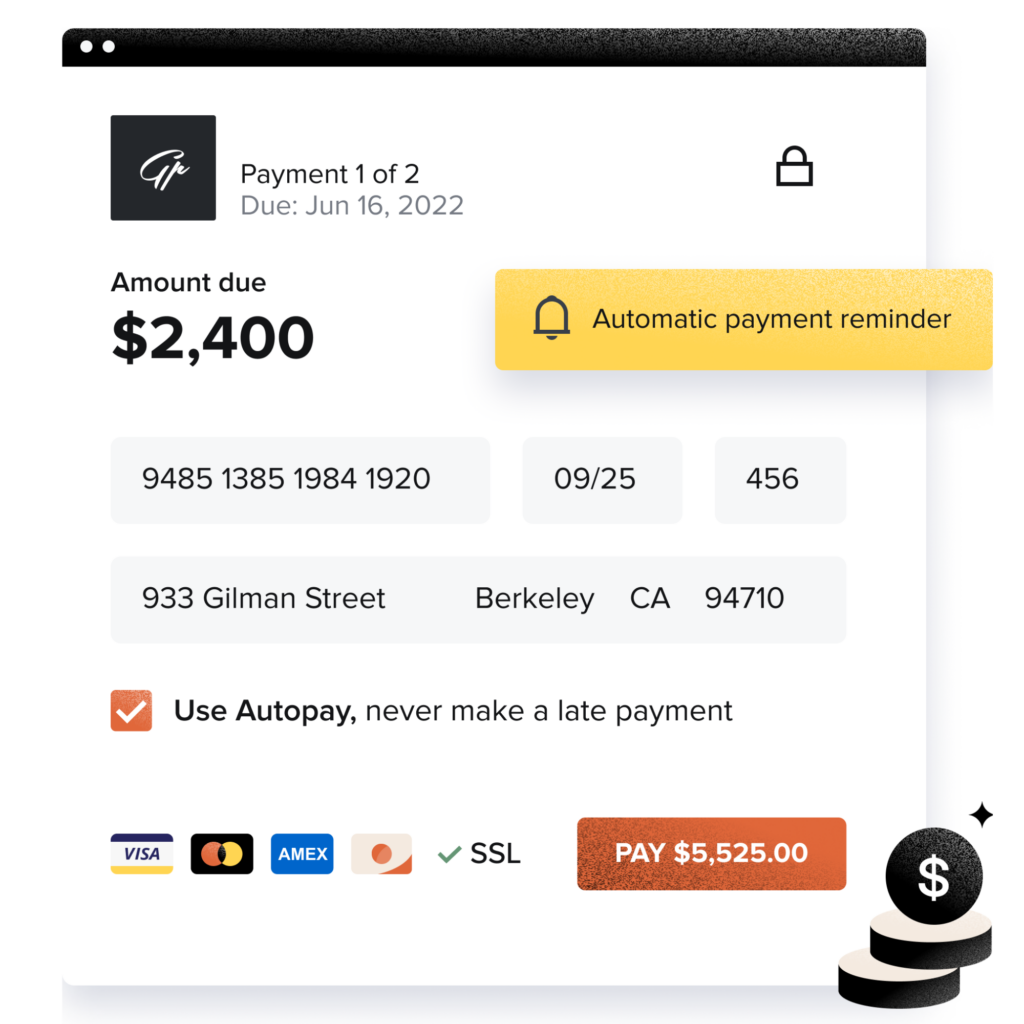If you’re a new business owner or just starting to develop more processes, you might be wondering: “What is an invoice?”, and “Why is it necessary?” Without one, you’ll risk a poor client experience and less protection against nonpayment. Here’s everything to know about using invoices to bill your clients.

When you work for a large company, ideally, you’re trained to do your job well. And if you make mistakes, there are protections in place. You’re not going to go home without pay because you forgot to send a bill on time (though you might deal with a stressed-out boss).
The stakes are different for independent business owners. You already know that if you don’t work, you don’t get paid. You can’t “phone it in” when you have a migraine the way you might have been able to at a traditional 9-to-5 job. But even more challenging than this is the reality that if your clients don’t pay you, you don’t get paid.
Chasing clients down in small claims court can be a difficult process, and it only works if you can prove your case to a judge. And — as difficult and technical as it can be — keeping good records with invoices is one of the best ways you can protect yourself against non-payment. They help both you and your client stay accountable, ensure cash is flowing properly, and keep working relationships healthy.
But what is an invoice? How do you know how to send an invoice and if you’re creating and sending them correctly? And how can you use invoices to make record-keeping easy and receive that all-important paycheck that you’re working hard for? We cover all of that and more in this guide for independent business owners.
Jump to:
- What is an invoice?
- Invoice vs. receipt: what’s the difference?
- Why are invoices important?
- What do you need to include in your invoices?
- What are the different types of invoices?
- How to ensure your invoices get paid
- Invoicing FAQs
- Start using invoices to improve payments and client relations today

Customize, download, and send a professional custom invoice in minutes.
What is an invoice?
An invoice is a document that you use to bill your clients. Just like how the bill at a restaurant itemizes everything you ordered, tallies up the costs, and provides a total, an invoice itemizes the products or services you provided for a client, tallies up the costs, and provides a total amount of money due.
Invoice vs. receipt: what’s the difference?
Invoices are official requests for payment. They are issued by a business to its client before or after goods or services are provided. An invoice typically details the quantity and cost of services provided, along with the total amount due, invoice payment terms, and a due date.
Some key characteristics of invoices are that:
- They’re issued before payment is received.
- They include details about goods or services provided.
- They contain a breakdown of costs.
- They offer additional information about payment terms.
- They contain contact information for both a client and a business.
Receipts, on the other hand, are documentation of received payments. They are issued after the payment has been made and serve as proof of a completed transaction. A receipt usually contains information similar to that on the invoice but confirms that the payment has been made and the transaction is complete.
Distinct features of receipts are that:
- They’re provided after payment is complete.
- They act as proof of payment.
- They contain a breakdown of the transaction, similar to an invoice.
- They do not usually contain the client’s contact information.
Why are invoices important?
Bottom line: Professional independent business owners use invoices to get paid. While you might think it’s no big deal to knit a hat, sell it to a friend, and expect them to pay you for it whenever they get around to it, when you’re running your own business, you can’t just expect other people to get around to paying you.
Your clients are just like you — or, if you’re magically organized, they may be just like your errant brother or cousin. They get busy, and they forget things. While some clients may intentionally try to stiff you on money, others may just lose track of the fact that they owe you.
Invoices serve as an impersonal, unemotional reminder of the contract between you and your clients. Clients expect invoices, so sending an invoice may come off as less aggressive than sending an email that says, “Hey, where’s that money you owe me?” And because of this, invoices help you get paid while also keeping your clients satisfied with your communication.
Invoices also clarify exactly what clients owe you. If you’re a freelance writer and you charge $0.10 per word, you may know that a client owes you $150 for a 1500-word article. But does your client know that? Are they clear about the expectations of payment for a 1499-word article versus a 1504-word article? Is it the same $150 for the expected 1500-word article, or do you charge based on exact words?
What do you need to include in your invoices?
Invoices can range from well-organized, online templates in your clientflow management platform to Word documents, to simple scraps of paper with information written on them. But for an invoice to be effective, you must provide your clients with a minimum amount of information. This includes:
- Your business name and the business contact your client will be working with
- Your professional address
- Your professional phone number
- The invoice date
- The name of the person or business you’re charging
- The address of the person or business you’re charging
- The date the goods or services were provided (or will be provided)
- An itemized breakdown of all services rendered and the charges
- A net summary of the cost of all goods and services
- Taxes, if necessary
- The total amount due
- Invoice payment terms
- The payment schedule and due date
Related Post
8 invoice examples to bill your clients
In addition to this necessary information, it’s also a good idea to include an invoice number and details for your clients about how they can pay you. For example, you may write a line at the bottom that says, “Checks should be made payable to ____,” if that’s how you prefer to receive payments. The more clear you can be with your clients, the more likely they are to pay in a timely manner, rather than delaying invoice payments.
Pro tip
Providing a simple payment experience can help you get paid faster. Use HoneyBook to combine your invoicing and payment processing, allowing clients to pay as soon as they receive an invoice.
What are the different types of invoices?
There are as many as 15 types of invoices in professional settings. But as an independent business owner, there are four main types you need to know to run a successful business: proforma invoices, sale invoices, recurring invoices, and overdue invoices. It’s also important to understand how to invoice retainer fees or deposits. Let’s break down each of these options below.
Proforma invoices
Proforma means “as a matter of form.” You should provide Proforma invoices to your clients before you provide goods or services. They outline the estimated costs for the work you’re about to perform, and they ensure clients really know what they’re paying for to prevent buyer’s remorse down the road.
Sale invoices
Sales invoices are also referred to as “regular invoices” or “traditional invoices.” You send these invoices to clients after you provide a good or service (or a group of goods or services) to outline costs.
Recurring invoices
If you provide a product or service on a consistent basis — such as a monthly subscription — you may consider creating a recurring invoice. These include a consistent amount for a set time period and serve as a reminder for your client that their bill is due.
Overdue invoices
Did you know that 39% of invoices are paid late? Overdue invoices are a reminder that your client hasn’t paid. They should clarify that the bill you’re trying to collect is past due. If you have a policy in place for bills that continue to go unpaid — such as canceling a contract, sending bills to collections, or suing clients in small claims court — include a polite line at the bottom of all overdue invoices that outlines your terms of payment for unpaid bills.
Retainer fees and deposits
Sometimes, you’ll want to ask clients for a down payment before you start working. You may do this for all clients, or you may only charge this retainer fee or deposit the first time you start working with a client. In either case, you’ll want to send a retainer or deposit invoice. Make it clear what the retainer fee or deposit covers so there are no disputes down the road. For example, if you charge an estimated 50% ahead of time for services, you’ll want to include a line on your invoice clarifying that the retainer fee or deposit covers half of the contracted services.
Download free invoice templates
Take your pick from these invoice templates for a variety of industries. Save time and get paid faster!
How to ensure your invoices get paid
Getting paid on time is essential to maintaining a healthy cash flow and business. However, a complicated invoicing system can delay payments. To make sure you’re getting paid in a timely fashion, consider ways to make invoicing easier so you’re more likely to stay on top of the process and your clients are more likely to pay their bills.
Using invoicing software to create digital invoices is one of the best ways to simplify this process. With the right tool, you can take the pain out of creating invoices by offering:
- Easy invoice creation: Quickly generate digital invoices using pre-set invoice templates, saving time and effort.
- Instant delivery: Send invoices electronically and directly to clients’ emails, speeding up the payment process.
- Payment tracking: Easily track and organize invoices by status so you can see which clients still need to pay.
- Automated reminders: Automatically send payment reminders for approaching due dates or payments that are past due.
- Multiple payment methods: Invoicing software often accepts multiple payment methods, making it easier for clients to pay how they want.
- Real-time updates: Receive instant notifications when invoices are viewed or paid, keeping you updated on payment statuses.
Using invoicing software allows you to implement invoices in short order without adding much work to your day-to-day tasks. In fact, you may find that, once you start using software, you actually spend less time collecting payments because you don’t need to search through your checking account to see which of your clients paid, track down nonpayments yourself, or manually send countless email reminders to clients about their unpaid bills. The best software does all the hard work for you.
Invoicing FAQs
Is an invoice proof of payment?
No, an invoice is a request for payment. After payment is received, a receipt is the proper proof of payment.
Is an invoice a bill?
Yes, an invoice is essentially another name for a bill. It itemizes goods or services and requests payment for them.
Are invoices legal documents?
That answer is more nuanced than you might think. Sending an invoice requesting payment doesn’t necessarily make it a legal contract. However, depending on the state, it can be a legally binding contract if both parties consent to its terms. If you intend your invoices to be legally binding, you should consult a lawyer in your area.
When should I send an invoice?
Typically, an invoice is sent after services have been rendered. However, the timing can also depend on the agreement or terms of service established with your client. For larger projects, some businesses will send invoices before a service or product is delivered to ensure that the client agrees to the prices and terms.
Start using invoices to improve payments and client relations today
Invoices aren’t about being super technical. They’re about safeguarding your time and your business. By implementing a system for invoicing your clients, you acknowledge the reality that your job matters and that getting paid is a priority. Professional invoice services can make it easier for you tracking orders, collecting payments, and sending reminders, so you don’t get bogged down with invoices and can continue dedicating your time to the job you love.







